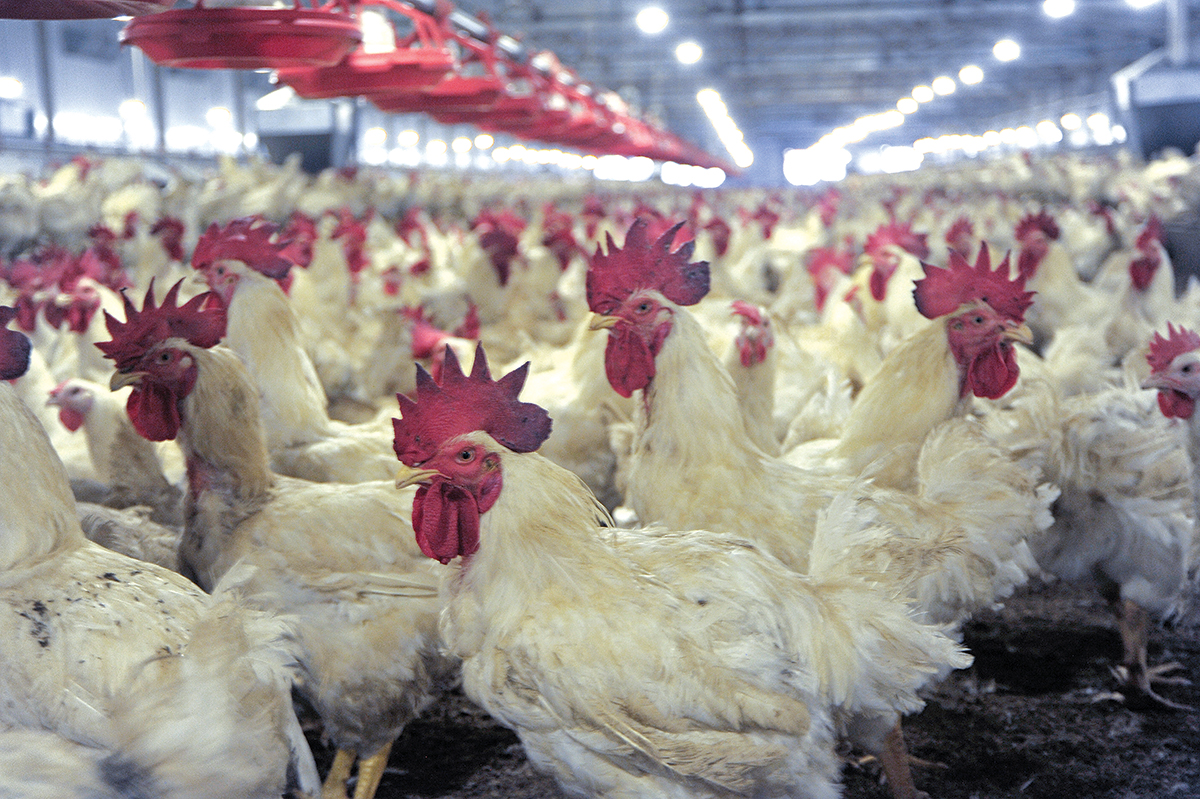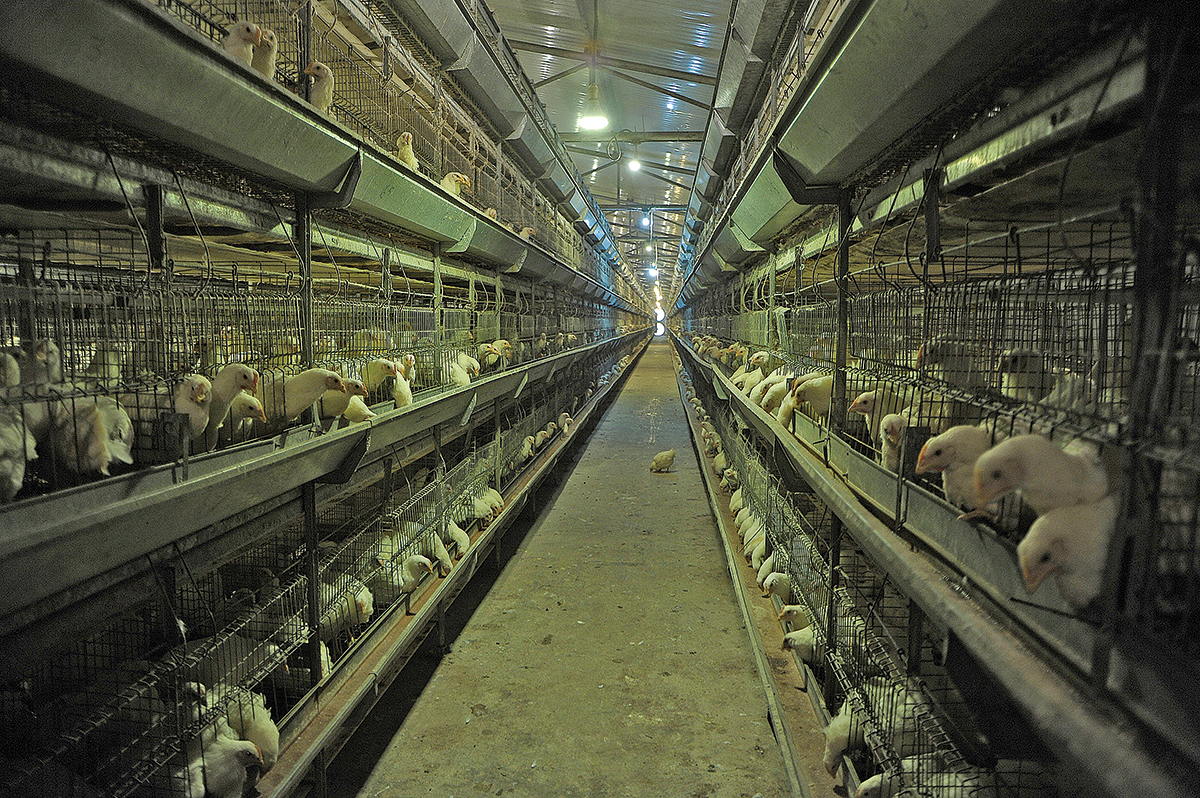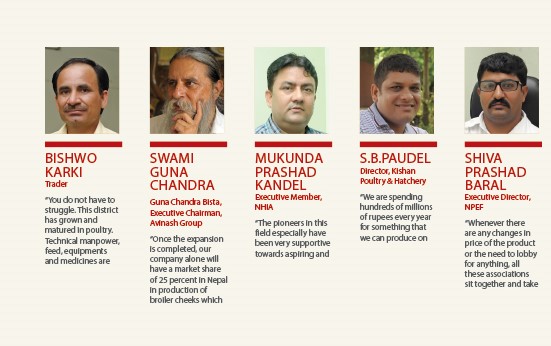
Chitwan has lately become a business hub for various industries. With its central location, proximity to neighbouring India and almost all developed cities across the country, and development of infrastructure, Chitwan has come to be recognized as a medical city, center of education, hub of poultry and fishery, and as the focal point for agriculture and other industrial activities. In this issue, Business 360° explores Chitwan as the nucleus for poultry farming and products.
Just a year ago, Sher Singh Poudel was dealing in kitchen utensils from a outlet in Bharatpur. With three like-minded friends, he co-founded Kishan Poultry and Hatchery six months ago with an initial investment of Rs 35 million. “The geography, market situation and infrastructure especially roads has blessed this district for poultry farming,” he shares about his new venture. Even though he has no particular affinity towards this business, he recognizes the huge demand for chicken meat in the country and the profitability from this demand.
The trend is such in this district that almost 50 percent of people in business are in the poultry business. Bishwo Karki, a retired banker and owner of a hatchery says that the rapid growth of the poultry sector is all due to the environment. “You do not have to struggle. This district has grown and matured in poultry. Technical manpower, feed, equipments and medicines are easily accessible,” says Karki.
According to Nepal Commercial Poultry Survey 2015 Chitwan produces the largest number of broiler chicken commercially. The district alone produced 53 million broilers in the year 2015, 10 percent of the total broiler production. The report published by Central Bureau of Statistics (CBS) through a survey conducted in 64 districts also states that the district is also the biggest egg producer in the country which according to the report produced 811.9 million eggs, 68 percent of the total national production. The report further reveals that a total of 1,923 poultry farms, 8.7 percent of total farms across the nation are in operation in the district. These farms have a size from 1,000 to 10,000 chickens and that of the total number of farms 72 percent are running on profit.
According to Nepal Poultry Entrepreneur Forum (NPEF), a local agency established to promote the interest of poultry farmers/entrepreneurs, of the total farms in operation in the district, 70 percent produce meat while 26 and three percent of the farms respectively produce eggs and cheeks. NPEF further says that the district produces 4.6 million chickens every day including 3.87 million of layers, 751,432 broilers and 35,000 others including local chicken and giriraj.
Traders claim that Chitwan is the largest producer of poultry products in the country, with the district recording a turnover of Rs 10.17 billion every year. It produces Rs 3.5 billion worth of chickens and Rs 5.91 billion worth of eggs. Sales of chicken manure amount to Rs 213 million annually.
“Around 65,000-70,000 people are employed in this sector. There is an additional 4,000-5,000 suppliers too,” NPEF Executive Director, Shiva Prasad Baral says.
Despite more and more people entering the poultry sector, the competition is not as foul, thanks to initiatives taken by NPEF. The organization was established in 2002 as the umbrella organisation of all poultry related businesses and has been playing a key role in promoting the poultry sector. NPEF is comprised of eight poultry related organisations including, Nepal Egg Producer’s Association, Nepal Poultry Market Management Association, Nepal Poultry Supplier’s Welfare Association, Nepal Hatchery Industry Association (Chitwan), Nepal Feed Industry Association (Chitwan), Nepal Veterinary Chemist and Druggist Association (Chitwan), Chitwan Nawalpur Feed Dealer Association and Fresh House Association of Chitwan. “Whenever there are any changes in price of the product or the need to lobby for anything, all these associations sit together and take joint action,” says NPEF Executive Director Baral. NPEF makes the final decision regarding fixing price of the poultry, identification of the market, delivery and supply mechanism, and works for the interest of all entrepreneurs, no matter how big or small.
According to Mukunda Prashad Kandel, Executive Committee Member of Nepal Hatchery Industry Association, cooperation among poultry entrepreneurs is very strong in the district. “The pioneers in this field especially have been very supportive towards aspiring and new entrepreneurs”.
Industry players blame the government for remaining apathetic towards their grievances even during difficult times. “A couple of years ago, bird flu damaged a number of farms here prompting losses in tens of millions of rupees, and we didn’t even hear a single word of sympathy from the government, let alone any concrete support,” opines a local poultry entrepreneur, “However, the exchange of support and cooperation among the traders is so strong that it is also a big reason why we are thriving”.
Not only new entrepreneurs, but pioneering figure in the industry are injecting huge amounts of money to expand their farms and production. They are also concerned about stopping the out flow of money that the country spends every year on importing meat and subsidiary products. Nepal imported meat worth Rs 139 million and fish worth Rs 233 million in the last fiscal year. “We are spending hundreds of millions of rupees every year for something that we can produce on our own,” says Poudel, Director of Kishan Poultry and Hatchery.
Dr Tilchandra Bhattarai
Managing Director, Pancharatna Group of Poultry Industries
How has Chitwan evolved in terms of poultry business?
Commercialisation of poultry started in the country from 1985 and saw its heyday in 2001. The poultry business shifted to Chitwan only later. After 1995-96, Chitwan witnessed the popularisation of this sector with overwhelming growth in feed and hatchery industries. Other districts like Pokhara, Butwal, Birgunj, Itahari and Saptari among others have followed suit. If we look at these districts including Chitwan, the poultry industry has flourished in such districts which are developed in terms of infrastructure and have higher population. Location is a key factor because transporting chicken to far destinations is not feasible as it’s a sensitive animal.
Looking at investor profiles, what sort of entrepreneurs are venturing into this business?
There was a time when everyone wanted to join this sector. They used to think it is easy money in the poultry business. They entered the sector backed by their capacity to invest while they themselves had no technical knowhow about the sector. Even though they entered the business, they had no concrete plans. So they failed to expand or diversify. A majority of them got displaced over the time. Times have changed now. In the present situation, there are experts of poultry available like myself. I left a government job and entered the agricultural business. I am the only PhD who is fully occupied in the agricultural sector. At the same time, I am also a veterinary graduate and I did my Masters and PhD in production and distribution management. On the other hand, there are other big investors who have intended to expand their companies through experiments in technology, breeding and putting in more and more investment to make their business an integrated company. These people are doing really well too. Moreover, the business in not disaggregated as before. In the past, there were too many small scale players, but today there are few players with bigger capacity.
How is the district performing in poultry production?
The story is not as gleaming as one might see from the surface. Of course, the district was doing well in the past, but it has suffered a lot since the outbreak of bird flu that hit the sector badly in 2001, 2005 and 2008. Same was the condition a couple of years ago when there was bird flu in Bhaktapur but the poultry sector of this district had to suffer. Last year’s earthquake followed by the border blockade plummeted demand immensely. However the sector has somehow recovered and is performing satisfactorily this year. On the positive side, the sector has grown tremendously, at least by ten times, from the time I entered this business. At least Rs 35 billion has been invested in poultry in this district and records annual transactions worth Rs 70 billion per annum. A decade ago, the sector in this district had ground annually by around 20 percent but at present the growth rate has been limited to less than 10 percent.
How do you view the future of this business here?
To be honest, this district has already seen its pinnacle and has no space for expansion in this district. The skyrocketing price of land which has begun attracting real estate investors has been detrimental to the poultry business. It takes a great deal of land for initiating poultry business which not everyone can afford. This makes the prices soar high. On the other hand, this business also requires isolated land, far away from human settlement. The growing population in the district with the flow of people migrating from elsewhere has made it difficult to find such appropriate land. This is the reason why traders have been shifting to neighbouring districts. Expanding the business in other parts is also less risky from the perspective of hygiene and safety. Otherwise, whenever there is outbreak of any disease, it destroys the entire business as they share close proximity in terms of geography.
Avinash Group, the first poultry company of Chitwan and one of the largest poultry company’s in the country has as much as Rs 3 billion invested in the poultry sector in the district. The Group owns Avinash Hatchery, Avinash Hy-Line, Avinash Farm and Avinash Vet Pharma among others. The company at present produces 150,000 chicks of broilers and around 60,000 chicks of layers every week while it also produces 150,000 eggs every day. The Group has for the first time in the country established an ultra-modern poultry and hatchery farm where feeding the chickens and hatching the egg happens through a computerised system.
Guna Chandra Bista, Executive Chairman of the group, sees immense potential in the poultry sector and says that his company is undergoing a massive expansion with an additional investment of Rs 2.5 billion. “Once the expansion is completed, our company alone will have a market share of 25 percent in Nepal in production of broiler cheeks which at present hovers at around seven percent,” he says adding, “Similarly, in the production of layers chicks, we will have market share of 90 percent which is at 60 percent at present.”

Following suit are five companies who have adopted high tech system to reduce manual work and to enhance the capacity and to increase their production base. To make the poultry sector self reliant, investors are also putting money into subsidiary businesses like feed. A total of nine feed companies are already in operation in Chitwan with an investment of Rs 110 billion at minimum.
Even though money is being poured into this sector, some entrepreneurs are shying away from the poultry business stating that the industry has already reached its saturation point. “There was a time when the annual growth of this sector used to be 30 percent a year, but this is now limited to some 10 percent,” says Kandel, Executive Committee Member of Nepal Hatchery Industry Association. He also says repeated outbreaks of bird flu and the losses incurred has prompted some small and medium level players to exit. Traders also voiced concern over the rising price of land with some entrepreneurs having to relocate away from Chitwan in adjoining districts like Nawalparasi, Butwal, Bara, Birgunj and Pokhara. Price of land has gone up by more than seven fold compared to only a decade ago.







